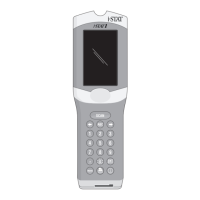PROCEDURE FOR CARTRIDGE TESTING
12
Art: 714374-00J Rev. Date: 25-Aug-11 12-1
Caution
The following cautions should be taken to prevent damage to the analyzer and
to ensure the safety of the operator and the integrity of results.
• Never look into the barcode scanner beam or point it toward
anyone’s eyes. The beam could cause permanent eye damage.
• Donotattempttoremoveacartridgeduringthetestingcycle.The
force that would be necessary to do so could damage the analyzer.
The message “Cartridge Locked” will remain on the screen until the
analyzer unlocks the cartridge.
• The analyzer may be contaminated with blood from prior use.
Whenever handling the analyzer, cartridges, and peripherals exercise
universal precautions to protect yourself from blood-borne pathogens.
Universal precautions are those procedures and practices, such as
the wearing of gloves, designed to protect personnel from blood-
borne pathogens as well as pathogens from other body substances.
These precautions are based on the assumption that blood, body
fluids or tissue can contain infectious agents and, therefore, should
be treated as a biohazard. For more detailed information, please
refer to either the CDC/NIH manual, "Biosafety in Microbiological
and Biomedical Laboratories", Fourth Edition, 1999, or the WHO
"LaboratoryBiosafetyManual",SecondEdition,2003.
To protect from nosocomial infections, decontaminate analyzers
periodically and whenever blood is spilled or transferred to an
analyzer. See under "Cleaning the Analyzer and Downloader" in
section17ofthismanual.
• A falling analyzer may cause injury. Always place the analyzer and
peripherals on a stable surface or in a location where it will not cause
injuryifdropped.
• The analyzer may be rendered inoperative by damage due to
mishandling, such as dropping, by exhausting the batteries or by
other causes. Clinical settings that demand fail-safe testing should
reduce this risk by having a backup analyzer or test source available.
• The analyzer should not be used in environmental conditions that
exceed the operating temperature and humidity specifications. An
analyzer that has been exposed to extreme environmental conditions
must be allowed to come to equilibrium with the operating
environmentpriortouse.Note:theanalyzerwilldisplaythemessage
“Temperature Out of Range” until it has reached its operating
temperature.
• Theanalyzeranditsperipheralsarenotlistedbyanyauthoritywith
respect to suitability for use in oxygen enriched atmospheres.
• Proper procedure must be used to ensure correct manual entry of
patientID,operatorID,sampletypeandotherdatathatmayaffect
the clinician’s interpretation of results.

